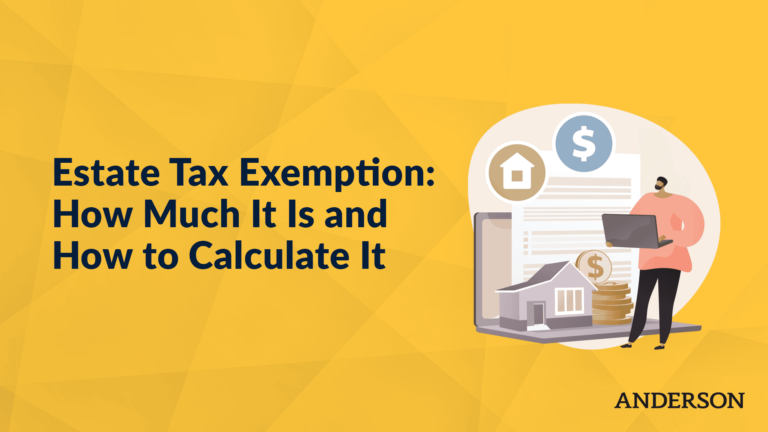Updated September 29, 2021
A dynasty trust is a special kind of trust that allows you to pass wealth on to your descendants. These trusts can allow a family to save on estate tax or transfer tax across generations while also protecting assets from a variety of situations.
Are you interested in creating a dynasty trust?
What is a Dynasty Trust?
A dynasty trust is a way to pass wealth to future generations. Perpetual trusts differ from most other trusts in the length of time they last and the control they offer. The most important function is that dynasty trusts are designed to last for longer periods of time compared to most trusts. Depending on the state where the generation-skipping trust is established, they can last for several generations or over hundreds of years.
Not all states allow these longer periods, which make dynasty trusts useful where the state allows for longer participation. Because a dynasty is a generation-skipping trust, it avoids some repetitive taxation. It also limits how future generations can access the family trust. Due to the common law rule against perpetuities, most trusts would end no later than 21 years after the death of an involved individual, such as a beneficiary who was alive at the time it was created. Irrevocable dynasty trust states have adopted some form of perpetuity reform which allows for longer trusts.
Dynasty or family trust funds are also irrevocable. Once they are formed, the grantor has no control over the assets. However, when creating the trust, the grantor can specify how the trust is to be managed, what control the trustee has, and how distributions will be made to beneficiaries. In contrast, a grantor trust or revocable living trust allows the grantor to withdraw or change aspects of the trust. A family trust can be set up to allow beneficiaries some levels of flexibility in managing assets. These trusts can also stipulate how funds are to be distributed to future generations.
Why You Need a Dynasty Trust
Dynasty trusts can help you save a great deal of money on taxes. Since this is a type of irrevocable trust, once the assets are inside, they can avoid some taxable events which allow for massive compounding power. This is especially valuable if using tax-free investments. The typical flow of the grantor’s estate from parents to children would be subject to gift and estate taxes as well as generation-skipping tax in some cases. Under the current tax law, using dynasty or legacy trusts means the estate would only face those taxes once and can thus grow much faster over time. Funding the dynasty trust in the next few years also takes advantage of the much higher tax exemptions allowed by the Tax Cuts and Jobs Act. An irrevocable dynasty trust can lock in the exemptions used to fund it and bypass the need for future generations to claim the exemptions as well. Trust planning is important because these exemption levels are currently set to expire by 2025 unless renewed by Congress.
Dynasty trusts also allow the grantor to direct how funds will be released to future generations. This allows the creator to determine how much and in what situations that funds will be released. For example, you could allow distributions to a beneficiary of a certain age as long as they are completing desired milestones such as college and not using drugs. The trust can be arranged to payout completely or parcel out assets over many different generations. Finally, dynasty trusts offer asset protection to future generations as well. Because the trust is irrevocable it can be designed to deter creditors from using those assets to settle a beneficiaries’ debt. This ensures that those funds will go to the future generation you wanted to receive these assets. Dynasty trusts can also be set up to prevent a future beneficiaries’ spouse from attempting to claim those assets in case of divorce.
These five topics define the Pros and Cons of a Dynasty Trust.
- Consult with an Attorney
- Name Your Trustees and Beneficiaries
- Decide Which Assets to Include
- Determine How Funds Will Be Distributed
- Fund Your Trust
Trusts involve a grantor who funds the trust, a trustee who manages it, and beneficiaries who receive the assets or distributions. Assets placed in the trust are controlled by the trustee. This provides protection and other benefits. Be sure to talk with a planning attorney to determine if a dynasty trust is right for you.
1. Consult with an Attorney
Dynasty trusts involve complex planning for future generations over many years. It’s important to consider federal and state taxes as well as detailed estate planning measures. To ensure that you are making the best arrangements, it is a good idea to consult with an attorney. Start by creating your estate and end of life plans. It is never too early to start planning for the future! Determine the best course of action and whether a dynasty trust would be the best use of your estate and lifetime tax exemptions.
You can design the trust to be flexible and allow certain levels of control to future descendants, along with a protection strategy against creditors. Since not every state allows these longer trusts, problems may arise regarding where the trust is located or managed, as well as what assets are included. An attorney can help you plan and answer your tougher questions about dynasty trusts.

2. Name Your Trustees and Beneficiaries
Determining who will manage your trust is not a simple choice. Different states offer different advantages and disadvantages. Depending on what assets you decide to fund your family trust with, you may be looking for different benefits from the available options. Dynasty trust taxation includes any amount over the lifetime exemption as well as federal and state taxes on income produced by the trust. Consider that some states do not have income tax while others may have other beneficial terms for trusts. Some states with the most favorable trust laws for long-term family trusts include South Dakota, Nevada, Tennessee, and Arkansas. Be sure to check with an attorney before funding a trust in any state to ensure it matches your estate plan and goals. There are a variety of different trustee or trust managers you can choose in these states– mostly banks or other financial institutions. Some states do not allow for trusts in perpetuity.
Naming your beneficiaries is another complex step as you must consider several factors. To maximize the benefit of the tax exemption over time, the trust would be most beneficial to later generations. You can set up funds to pay out to children, grandchildren, later generations, or a combination of each. However, the longer the dynasty trust duration, the more complex the planning becomes.
3. Decide Which Assets to Include
Determining which assets to include in your dynasty trust fund is another complex issue. Trusts face the highest federal tax rate for income not passed to beneficiaries. Depending on which state you have the trust, you may be able to bypass state income tax. Regardless, it may be best to consider non-income producing assets such as non-dividend paying stocks, tax-exempt bonds, or other tax-free investments.
Other assets could include real estate. Some families even use trusts to purchase land with the intent of keeping it in the family for future generations. You could also choose to obtain life insurance set to pay into the trust at death.
4. Determine How Funds Will Be Distributed
Next, you’ll need to determine how to distribute the funds from your family dynasty trust. While the idea of leaving a legacy to future generations may feel good, there are several issues to consider. What level of control do you want each trust fund beneficiary to have? Many wealthy families decide to pass the funds only if their descendants meet certain conditions. Basically, you can make sure they are worthy of the family funds by stipulating milestones they must meet. These spendthrift clauses can help protect the trust fund from irresponsible beneficiaries, as well as from creditors or ex-spouses.
Once you determine what guidelines are acceptable for distributing funds, you can detail exactly how the trustee is to release funds to future family generations. This can range from requiring drug tests, prohibiting spousal control of assets, or requiring certain education levels to be met. The fund could also establish charitable contributions of certain trust income for additional tax benefits.
Next, you could also include the option for a power of appointment for certain beneficiaries or allow the trustee to create these for a future beneficiary with approval from a trust protector. This would give those beneficiaries enhanced control over specified assets, but those assets would also become a part of their estate and be subject both to taxes and creditors. Since this step involves decision-making across many years, it is a great idea to consult with legal guidance from a dynasty trust attorney.

5. Fund Your Trust
There are two ways to fund your trust: You can add assets during your lifetime, or at the time of your death. Because the family trust is irrevocable, once assets are added they cannot be removed. The decision should be carefully considered during your estate and end of life planning stages. This way, you can ensure you are maximizing benefits and taking advantage of available tax exemptions. Currently, the Tax Cuts and Jobs Act (TCJA) has increased the lifetime federal estate tax exemption to over $11 million, or double for a married couple. This exemption amount is tied to inflation but set to expire in 2025. If the exemption is not renewed, it may be worthwhile to lock in this exemption amount before that deadline. After 2025, it may decrease back to its previous $5 million level. Both an estate tax exemption and a generation-skipping transfer tax exemption would detract from the lifetime total. You may also have to pay state estate and transfer taxes. You can also take advantage of the $15,000 annual gift exclusion per person.
Coordinating these exclusions and exemptions is vitally important and makes it worth your time to consult with an attorney. In keeping with your estate plan, you can fund your dynasty trust while alive, but keep in mind those assets cannot be withdrawn. You could also set assets to be released into the trust along with a life insurance policy on death. Finally, you could also use the trust to purchase land to be held in a real estate trust account.
Is a Dynasty Trust Right for You?
Dynasty trusts provide a way to transfer your estate to future generations while bypassing some taxes. The grantor can allow some flexibility to future generations on how they can control trust assets or stipulate exactly how those funds are to be released. If desired, you can require future descendants to achieve detailed milestones before they are eligible to receive funds.
To begin, consult with a knowledgeable attorney on your estate and end of life plans. Determine if a dynasty trust is the best option for your family. Once you decide this step, you need to determine who will manage the trust and in which state the trust will reside. You must also name your beneficiaries and decide which assets to include. The dynasty trust will owe income tax and may owe other taxes depending on location.
Choosing wise investments such as tax-free or non-income producing assets may be the best strategy. Some families use their dynasty trusts to buy land. Then you must decide how the funds are to be distributed to future generations. You can require certain actions of your descendants in order to protect the fund against poor decision makers and creditors.
Finally, arrange how the trust will be funded in relation to your estate plan to take advantage of applicable tax exemptions and other benefits. Because these steps involve projections years into the future, it is a great idea to start by consulting with a professional tax advisor and attorney. A dynasty trust can be a great tool to provide for future generations, but they are also irrevocable. Plan carefully to ensure you are making the best possible choices. For professional assistance with trusts, taxes, and estate planning, contact Anderson Advisors today.
To hear what others have to say about working with Anderson, click here to check out our reviews.
As always, take advantage of our free educational content and every other Tuesday we have Toby’s Tax Tuesday, another great educational series. Our Structure Implementation Series answers your questions about how to structure your business entities to protect you and your assets. One of my favorites as well is our Infinity Investing Workshop.
Additional Resources:
- Join our next Tax & Asset Protection event to learn more advanced tax minimization & entity structuring strategies
- Subscribe to our YouTube channel to make sure you never miss the latest strategies & updates
Bonus Video
Free Strategy Session with an Anderson Advisor
Receive a detailed risk assessment to assist in lowering problem areas that could wipe out all of your assets with one wrong move. Speak with an Anderson Professional Advisor to get your FREE Strategy Session.
Limited-Time Offer: ($750 value.)











